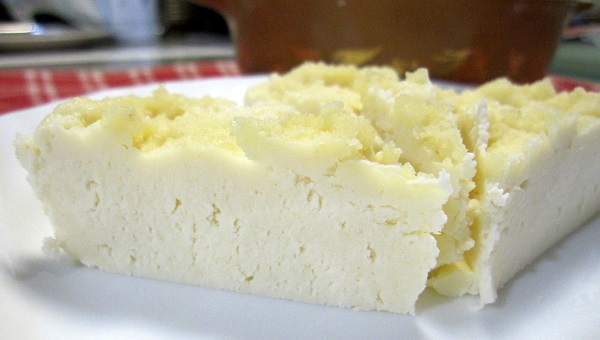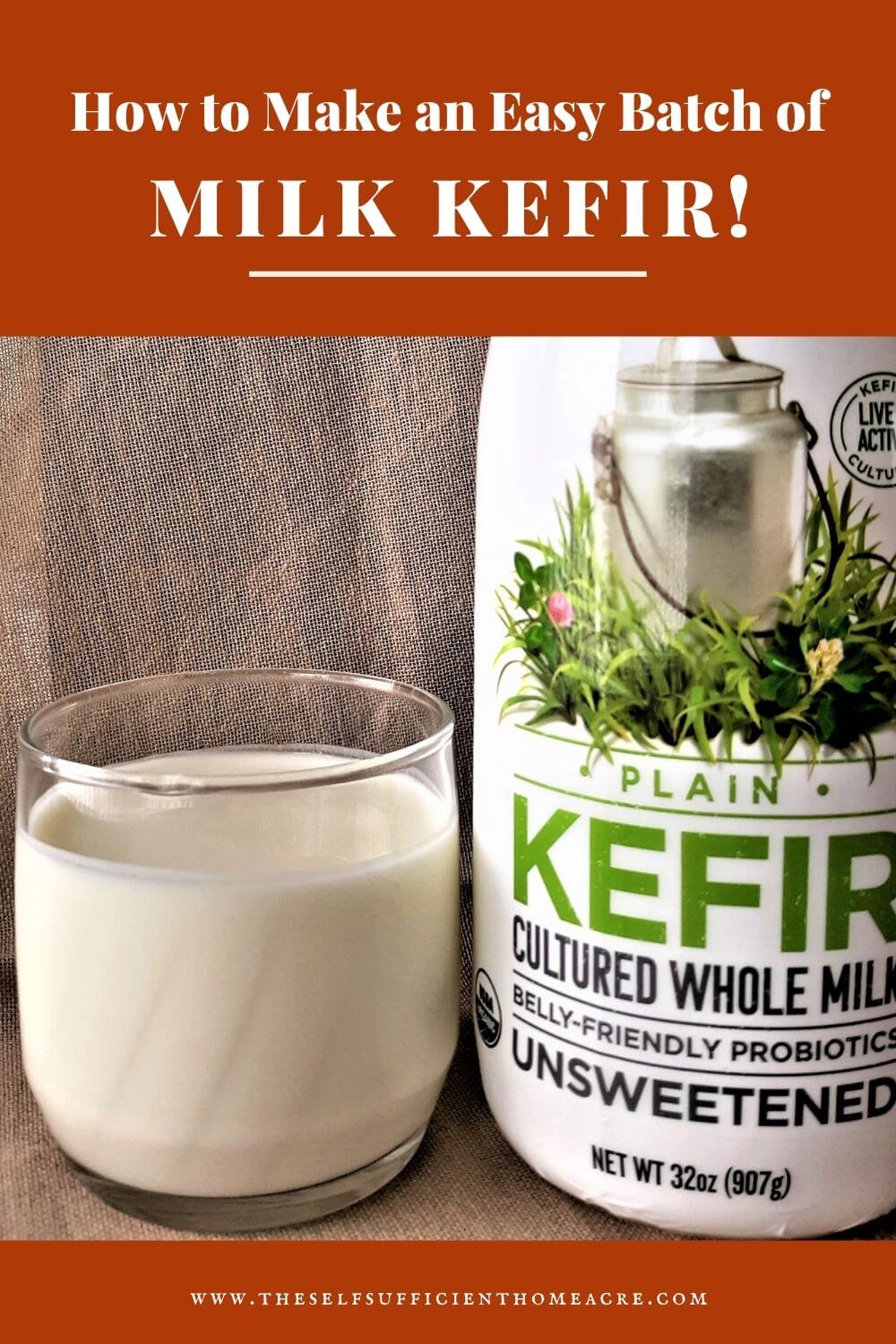How To Make Dutch Cheese at Home
You’ve heard of Edam and Gouda, but have you ever heard of Eric’s Grandmother’s Dutch Cheese? I’m guessing not. When immigrants came to the United States, they brought their customs, knowledge, and some delicious recipes along. Unfortunately, much of this Old World wisdom and food has been forgotten.
This Is One Of The Reasons I Love My Readers!
People from all over the world write to me with questions, comments, and suggestions…it’s great! I love to hear from you. 🙂
Recently one of my readers, Eric from New York, left a comment with directions for making his Grandmother’s Dutch Cheese recipe. So, of course, I had to make it. Eric has given me permission to share his recipe in a post so you can try your hand at making this easy, fresh cheese too!
Dutch Cheese ~ Eric’s Family Recipe
Ingredients:
- 2 gallons sour milk
- 1/2 cup unsalted butter
- 1 1/2 tsp baking soda
- 2 tsps salt, non-iodized
- 1 cup sour cream (no salt)
Pour sour milk into large stock pot. Scald over medium high heat (175 degrees F) until the curds and whey separate.
Line a colander with cheesecloth, place over a large pot or bowl to catch the whey. Pour separated milk into cloth lined colander and allow to drain until curds are fairly dry. (Press or squeeze out more whey for a drier cheese.)
Place curds into top pan of a double boiler. Add baking soda and butter, stir, and allow to sit at room temperature for 2 hours.
Add salt and sour cream to curd mixture and combine. Place double boiler over medium low heat. Stir frequently until mixture has the texture of a creamy, small curd cottage cheese.
Pour cheese into a mold, loaf pan (or non-reactive dish) and refrigerate for 2 hours or overnight.
Here is the original comment from Eric, with minor corrections included…
You may read Eric’s comments on my post Sour Milk – Don’t Toss it Out.
“I just joined this blog, but am finding it as a great resource for sharing old family recipes. Love this! My Mother is Swedish, and my father is of Italian/Austrian mix who come from Pennsylvania Dutch country, so between them and the grandparents we have such a vibrant selection of recipes, many from the older farmsteading generation.
Here is a nice simple recipe for Homemade Dutch Cheese (I’ve seen similar recipes called Fromage Blanc or Farmer’s Cheese) that is made using old sour milk. It is quite delicious. I will list as it is written by my Grandmother, but you can definitely half or double the recipe.
Ingredients:
2 Gallons Sour Milk, 1/2 cup unsalted butter (sweet cream or cultured), softened, 1 1/2 tsps. of baking soda, 2 tsps natural salt (DO NOT USE IODIZED TABLE SALT), 1 cup sour cream. The family used homemade s.c., but store version should work fine (check for salt-free content).
-First, scald the milk until it separates. For those into checking temperatures, it will come to 175.. (You know how the grandparents just knew things then by sight or touch). You then want to strain well to remove the whey. The cheese will be soft unless most of the whey is out. My grandmother used to put curds in cheesecloth, tie it off, then tie it to a wooden spoon and let it hang over a pot to let all the whey drain out. Transfer curds to bowl that can be used to double boil. I recommend the top part of an actual double boiler or a glass Pyrex bowl, that you can cook with over boiling water.
-After placing curds in bowl, add soda and softened butter, combine well, and just let sit for 2 hours.
-Place bowl in top of double boiler and add salt, and stir in sour cream.
-Cook until curds become more like cottage cheese (about 1/2 hour), stirring frequently. (Italics denote Eric’s correction to his original comment.)
-Pour into mold or loaf pan. Refrigerate. Better after a few hours or 2nd day as flavors have chance to meld.”
Eric’s Notes:
“This is a delicious cheese, perfect with wine and bread. It is also delicious used in recipes, omelettes, in a vegetable bake or even a lasagna bake. At the time my grandparents made this recipe they would use ‘Dairy Salt.’ Which was [is] a thing. It was a Non-Iodized, pure flaky salt. I have never seen it in modern circumstance in the U.S., but the best substitute is pure Kosher, or Natural, flaky Sea salt. The table salt we know from grocery stores will not allow it to set or age properly.
This recipe is created with Cow’s milk, but may work with Goat or Sheep’s milk, though never tried by me. It is also made from milk that has gone sour vs. Soured milk (made with lemon juice or vinegar). It may work with the latter, but I have never had. I find best served on a platter drizzled with some delicious Olive oil and black pepper over cheese, but if you frequent this recipe, you can experiment with different herbs, etc. and create your own hand me down recipe.”
In an update, Eric commented…
Eric shared a quick correction, which I included in the recipe, and a bit more information about his family recipe…
“…It will look like Farmer’s cheese or Topfen or Quark. This was an Austrian recipe she brought to America with her, not necessarily common to Pennsylvania Dutch, though that may all be relative considered how when we settled in America, our forebears’ recipes sometimes defined a region. Topfen cheese was also a popular recipe for my (Austrian) grandmother, and I think this was a variation on that. Topfen used buttermilk, this used sourmilk.
I’m sorry I never questioned the specific details, In hindsight I see why this is so important culturally to remember and embrace the traditions, and my grandmother named this recipe in her homemade “cookbook,” which I made sure to keep as it is full of rare and unique (and yes truly weird) food creations. Whether it was Dutch, or she got it from a Dutch friend, or in her travels, I’ll never know. I love the uniqueness and continued relevance of the recipe.”
I contacted Eric to ask a few questions and he supplied a bit more information about the origins of the recipe…
“…Regarding background, I know it was a recipe brought to America from my Austrian Grandmother. She named it Dutch Cheese, which I think came from one of her ancestors from the Netherlands area. Sadly never questioned it. She also made Topfen cheese, which is a similar cheese but made from Buttermilk, and my maternal grandmother (German/Swedish descent) made Quark cheese. Many neighbors made similar cheeses, and all claimed theirs was better than the others, so I would say it was more regional to their home country rather than Pennsylvania itself.
Shared on the Simple Homestead Hop, Family Homesteading and Off Grid Hop









Hi, been a minute since the last comment lol, but curios about the above comment regarding sour pasteurized, or soured raw??? Thanks
Hi,
Well, the commenter is correct in that there are different bacteria at play in raw milk vs pasteurized milk. Personally, I am only using pasteurized milk now because I can’t be sure that there aren’t bad bacteria in raw milk… since cows do get sick and bacteria can be introduced during milking.
Bringing sour milk up to the proper temperature for the proper length of time should kill the bad bacteria and make it safe to eat. However, I do not use milk that has been sour for more than a couple of days and I err on the side of caution by keeping the milk at about 180 F for 15 minutes.
Good post guys!
Happy to share!
This really should be made with only raw milk. Soured raw milk is also called clabbered milk and cheese can be made from it easily. Soured raw milk is not “bad” milk because souring simply ferments the beneficial bacteria in it. Soured pasteurized milk has actually gone bad and should not be used for anything because of the risk of food poisoning. Because it has no natural beneficial bacteria, all that has happened is that it has actually spoiled and is inedible.
What a fantastic recipe! I suppose the key is the salt- we’ve been on kosher for a while, but I could see iodized salt being a problem. Thank you for sharing on the Family Homesteading & Off the Grid Blog Hop:)
Thanks, WT 🙂
I was so glad that Eric shared this recipe with us…what a great way to preserve a family tradition!
Thanks for hosting the hop each week!
Thank you, Lynn, for sharing the recipe with others. My family will be honored. I hope it is tried by many of your readers.
I wanted to make two quick corrections that I noticed to the recipe as I posted it just for clarity.
In the directions for the recipe where it states to add soda and butter to curds, I wanted to add that the butter should be sweet cream or cultured, but unsalted, and softened to room temperature, and that the ingredients should be mixed in when added. I’m sure this is obvious, but just in case.
Lastly, in the section under my “Notes.” I wrote, “great your own.” I meant, “create your own.”
Please enjoy the recipe everyone.
Thank you for the clarification, Eric…I’ll make those changes.